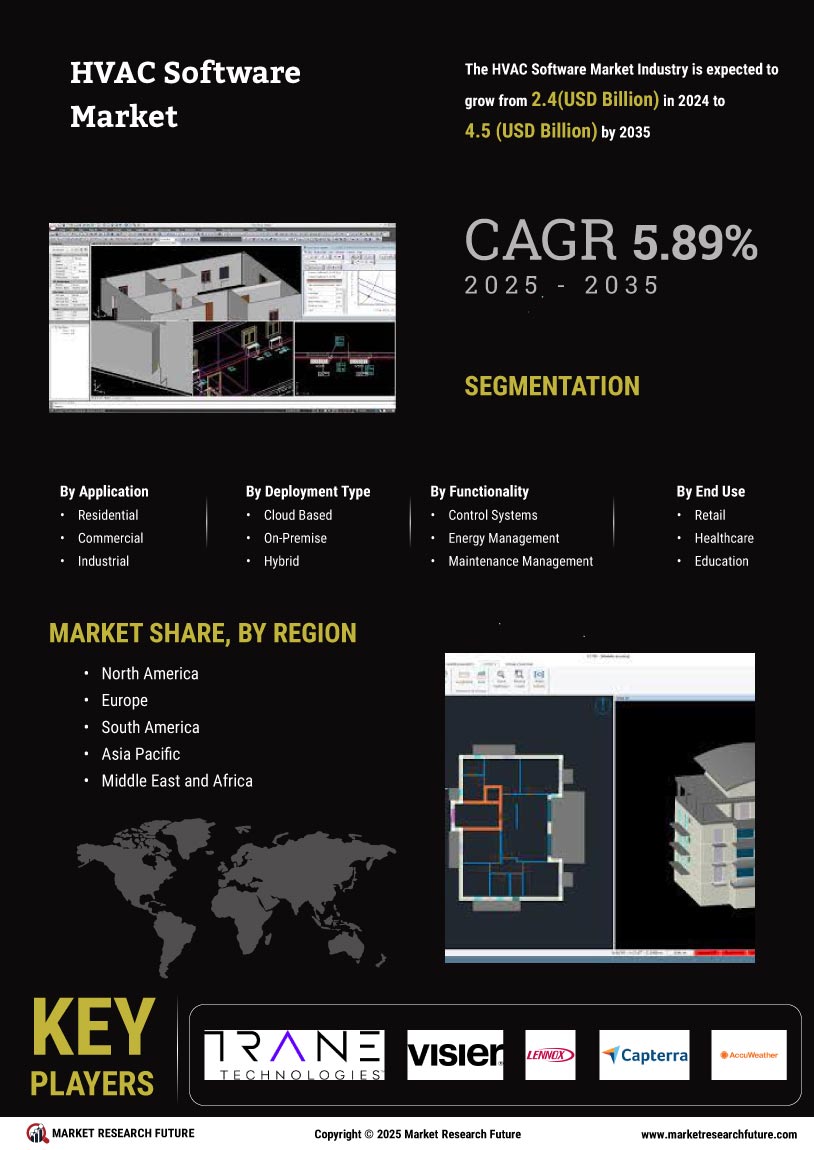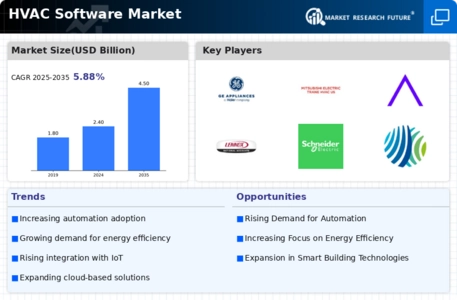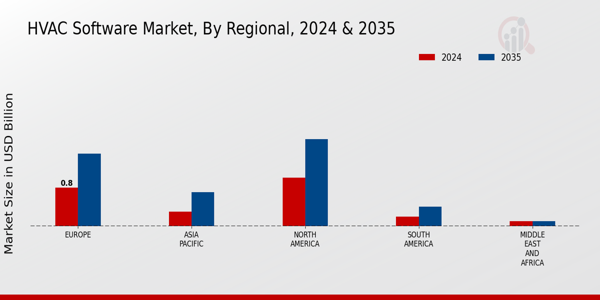Focus on Indoor Air Quality
The emphasis on indoor air quality (IAQ) has become a pivotal driver in the Global HVAC Software Market Industry. As awareness of health and wellness increases, both residential and commercial sectors prioritize maintaining high IAQ standards. HVAC software solutions facilitate the monitoring and management of air quality parameters, ensuring compliance with health regulations and enhancing occupant comfort. This focus on IAQ is likely to propel market growth, as organizations seek to implement effective HVAC systems that not only regulate temperature but also ensure clean and healthy indoor environments.
Market Growth Visualization
Increasing Demand for Energy Efficiency
The Global HVAC Software Market Industry experiences a notable surge in demand for energy-efficient solutions. As governments worldwide implement stricter regulations aimed at reducing carbon emissions, HVAC software plays a crucial role in optimizing energy consumption. For instance, advanced software solutions enable real-time monitoring and management of HVAC systems, leading to reduced operational costs and enhanced energy efficiency. This trend is reflected in the projected market value, which is expected to reach 2.4 USD Billion in 2024, indicating a growing recognition of the importance of energy efficiency in HVAC systems.
Integration of Building Management Systems
The integration of HVAC software with building management systems (BMS) is a significant trend within the Global HVAC Software Market Industry. This integration allows for centralized control and monitoring of various building systems, including lighting, security, and HVAC. By streamlining operations, organizations can achieve greater energy efficiency and operational effectiveness. The synergy between HVAC software and BMS is likely to enhance the overall performance of buildings, making it a critical factor in the market's growth trajectory. As more facilities adopt integrated solutions, the demand for advanced HVAC software is expected to rise.
Technological Advancements in HVAC Systems
Technological innovations significantly influence the Global HVAC Software Market Industry. The integration of IoT, AI, and machine learning into HVAC systems enhances operational efficiency and predictive maintenance capabilities. These advancements allow for more precise control of heating and cooling processes, ultimately improving user comfort and reducing energy waste. As a result, the market is projected to grow at a CAGR of 5.88% from 2025 to 2035, reaching an estimated value of 4.5 USD Billion by 2035. This growth underscores the importance of adopting cutting-edge technologies in HVAC software solutions.
Rising Urbanization and Infrastructure Development
Urbanization continues to drive the Global HVAC Software Market Industry, as more people migrate to cities, leading to increased demand for residential and commercial buildings. This trend necessitates the installation of efficient HVAC systems, which in turn fuels the need for sophisticated software solutions to manage these systems effectively. As urban areas expand, the complexity of HVAC systems increases, prompting the adoption of advanced software for optimal performance. The growing urban population is expected to contribute significantly to the market's expansion, reinforcing the need for innovative HVAC software solutions.









